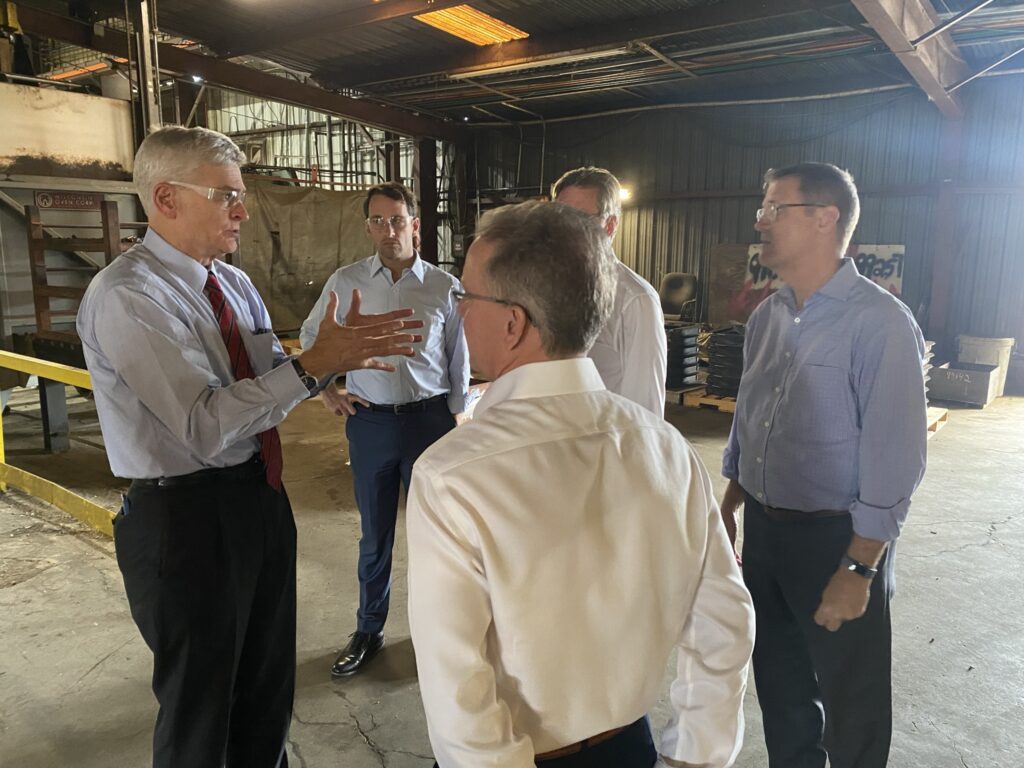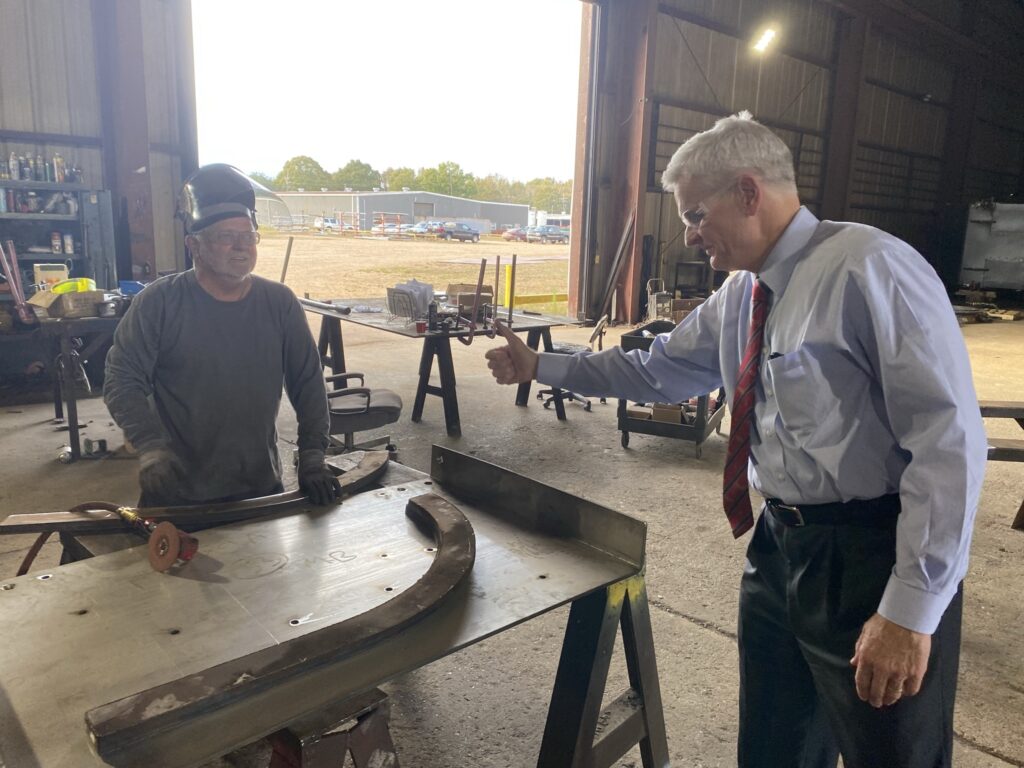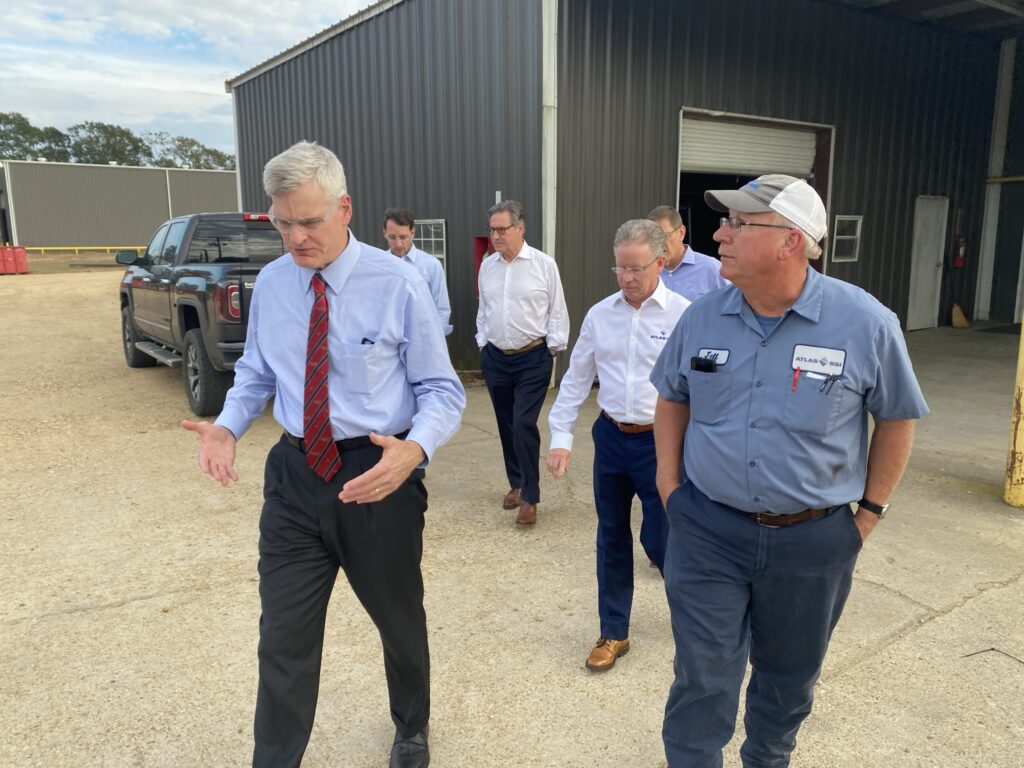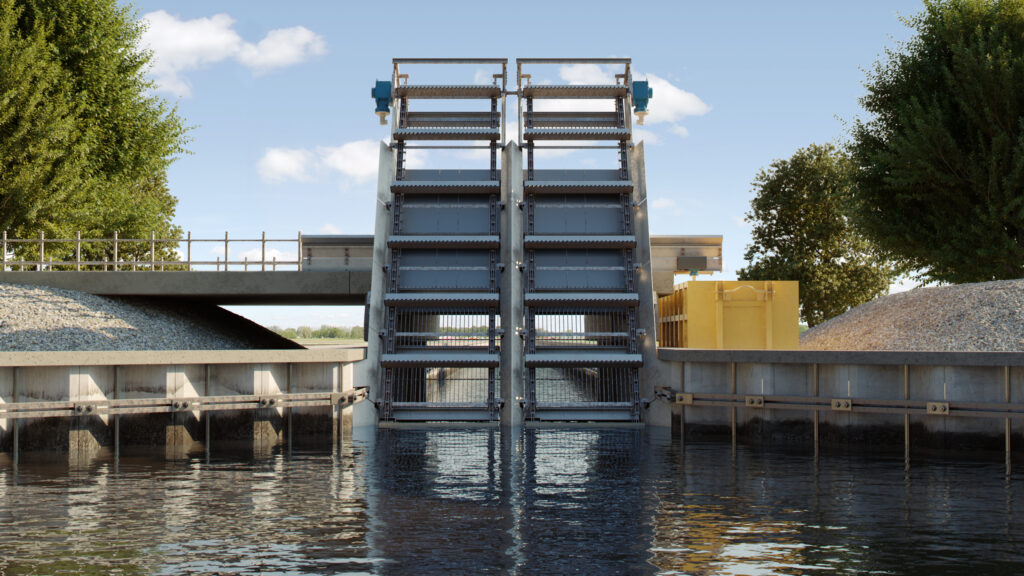The Atlas-SSI team had the pleasure of providing Senator Dr. Bill Cassidy and his team a tour of our manufacturing facility in Slaughter, Louisiana. Senator Cassidy has a long and distinguished record of helping to improve the lives of residents in Louisiana, including securing costal restoration projects to help protect families from natural disasters. During the tour, we spoke about the water infrastructure bill and how Atlas-SSI water intake systems and bar screens can help the state build resiliency to combat the threat of flooding from heavy rain events, rising ocean levels and hurricanes.
The historic infrastructure bill that was passed in the summer included billions of dollars in new federal investments in America’s water infrastructure and for projects that build infrastructure resilience against climate change. In 2020, the United States faced 22 extreme weather and climate-related events that collectively had a cost of nearly $100 billion in losses. Flooding is often a major contributor to the devastation that is suffered because of these events and the infrastructure bill represented the largest investment in the resilience of physical infrastructure and natural systems in American history.



The Flood Factor database created by First Street Foundation found that over half a million properties in Louisiana are at substantial risk of flood events caused by heavy rainfall, rising sea levels and hurricanes. As a result of this risk, Louisiana is number 2 in the national flood risk ranking. Of additional concern is that the number of properties considered at high risk from flooding is expected to increase by 70% over the next 30 years. The flood risk is spread throughout the state and impacts major cities including New Orleans, Baton Rouge, Lafayette, Lake Charles, Alexandria, Monroe and Shreveport.
On the front line of the battle to reduce the risk of flood damage are levees, gates, floodwalls and drainage canals that are designed to help channel and move water away from populated areas. The operation of these complex systems often requires the use of a pump station to move water out of canals, past gates and into flood plains. New Orleans alone has 24 pumping stations that house 120 large-scale drainage and constant-duty pumps. Large pump stations are often staffed by permanent and highly-experienced city engineers, while smaller stations can be monitored remotely with periodic checks to ensure system readiness.
A critical component of a pumping station is the bar screen or trash rake system that is used to remove debris from the water before it enters the pump. A significant amount of debris can quickly collect in a water canal during a heavy rain or hurricane event, including lumber, furniture, tires, trees and a variety of other large objects that could quickly damage a pump and render it useless. Organic debris such as weeds, algae and grass can also cause pump damage and must be removed. Bar screens are designed to fit into canals or water intake openings and generally operate like a conveyor. Debris is stopped by the bar screen while water freely passes to the pumps. A motor, chain and rake are used to scrape away and remove the debris from the surface of the bar screen to prevent it from clogging. Atlas-SSI designs heavy duty bar screens that efficiently remove debris under the toughest loading conditions which is critical during heavy rain events. The bar screens can be either operated remotely or manually if personnel are stationed at the pumping station. Bar screens can also be designed with conveyors and compactors to automatically collect and remove debris into industrial bins for disposal.

The construction of new pumping stations and on-going upgrades to existing stations is critical to minimize the impacts of flooding and to help ensure infrastructure resiliency. Atlas-SSI has over 50 years of manufacturing excellence in Louisiana and the entire team is proud that they are providing leading bar screen engineering, design, assembly and service solutions that help to ensure pumping stations operate at peak efficiency under the toughest circumstances.
